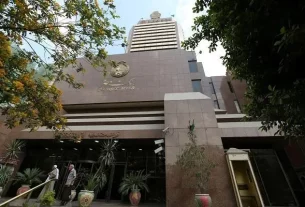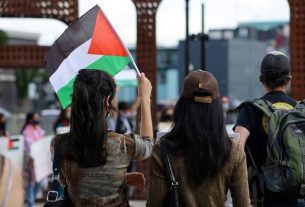A displaced man in a camp in North Kivu.
© European Union, 2023 (photographer: Peter Biro)
Wracked by decades of conflict, the Democratic Republic of the Congo (DRC) is the most complex and protracted humanitarian crisis in Africa and the largest hunger crisis worldwide. It is also considered a forgotten crisis.
After months of relentless violence in the eastern part of the country, the humanitarian situation continues to deteriorate. Over 6 million have been forced to leave their homes across Congo – the largest population of internally displaced people on the continent.
In response, the EU launched a new series of air lifts (EU Humanitarian Air Bridge), transporting essential humanitarian aid supplies into the eastern city of Goma. Last month, 8 air lifts brought 200 tonnes of supplies, including vital food and medicines, into eastern Congo.
Nena Lafuente, who helps oversee EU humanitarian programs in Goma, spoke to us about the ongoing crisis.
1. Could you describe the situation right now?
Nena: The country has been in a state of large-scale humanitarian crisis since the mid-90s, but in the past year, the situation has deteriorated alarmingly for millions of Congolese.
By some counts, there are more than 150 armed groups operating in the DRC. The resurgence of one of them, the M23 rebels in North Kivu province, appears to have been the spark that lit the fire that is currently raging across much of the east of the country.
The DRC already had one of the world’s highest internally displaced populations, but due to the violence, an additional 1.5 million people have been displaced just in the first 6 months of 2023.
Approximately 60% of these displaced persons are children, and many of the families have been displaced multiple times as the ever-expanding zones of conflict successively overrun their initial safe havens.

Over 80% of displacements in eastern Congo are due to attacks and armed clashes, according to the UN.
© European Union, 2023 (photographer: Peter Biro)
2. How are the many uprooted people coping day-to-day?
Nena: Most of the displaced persons are hosted by other families. In a country where 70% of the population lives in extreme poverty, this situation poses a significant burden on those households, further stretching already scarce resources.
Some of the displaced have settled in sites on the outskirts of Goma, where they live in conditions of extreme hardship. Women and children are exposed to massive protection violations, including sexual exploitation and rape.
Diseases like cholera and measles are recurrent, children are unable to attend school, and families have no access to income or food. Many people are forced into desperate measures, such as engaging in sex work for survival.
But in the middle of all this hardship, I am always struck by the generosity of the host population.
During a recent visit to one of the displacement camps, I met with a foster family. They regularly take an unaccompanied child into their home and provide them with a safe and caring environment until the child can be reunited with its family. People here often open their hearts and their homes to these children in need.
However, the humanitarian crisis in the Congo is not only a displacement one. Overall, some 26 million Congolese – about 25% of the population – are experiencing high levels of acute food insecurity.
An estimated 2.6 million children under 5 years old suffer from acute malnutrition and 4 million children are out of school. Despite this, Congo remains a largely forgotten crisis.

Nena Lafuente (in yellow) during a recent visit to Goma by Maciej Popowski, Director General of the Commission’s Civil Protection and Humanitarian Aid Operations department.
© European Union, 2023 (photographer: Julie La Roche)
3. What is the EU doing to help?
Nena: Through our numerous humanitarian partners, the EU provides food, shelter, water, cash assistance, and other emergency help.
Our projects, including the latest EU humanitarian air bridges, focus on life-saving assistance to the most vulnerable who are affected by recent conflicts, epidemics, and natural hazards.
To try to break the cycle of poverty and deprivation, we also dedicate 10–15% of our budget each year for education projects, providing physical and psychological protection to children, as well as addressing their educational needs.
The Commission’s Civil Protection and Humanitarian Aid Operations department, together with the International Partnerships department, is boosting efforts to create effective synergies within the education sector. The aim is to help bridge the gap on education and create better linkages between urgent relief and longer-term solutions.
4. The crisis in DR Congo is one of the largest and longest running humanitarian crises in the world.
Are the current aid levels enough to address the needs?
Nena: As of now, only 33% of the $2.25 billion required for the humanitarian response has been funded. The EU is the second-largest donor to this budget, but according to the UN, 80% of the funding comes from just 5 donors.
Faced with the scale of the disaster this year, the EU has topped up its 2023 humanitarian budget – almost doubling it to more than $84 million. But much more is needed to address this massive crisis.



